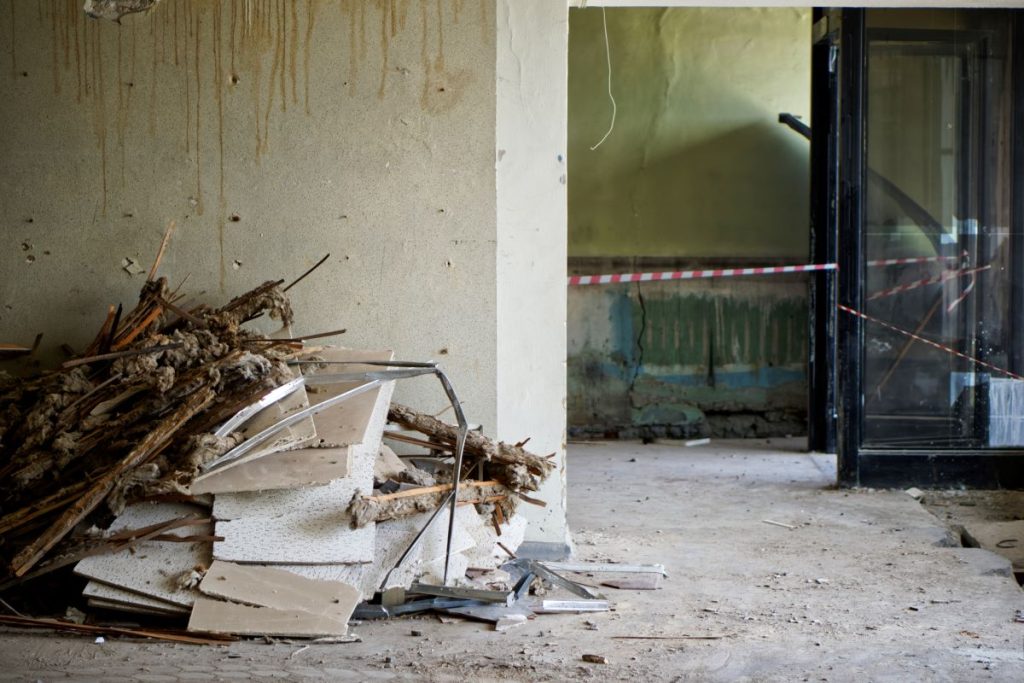Fire damage can be devastating, leaving homeowners and property managers facing a complex and emotionally challenging cleanup and restoration process. Understanding the steps of fire damage restoration can provide clarity and peace of mind during a difficult time. Here’s an in-depth look at the steps of fire damage, from initial assessment to the final touches of making your property feel like home again.

Initial Assessment
Firstly, the steps of fire damage starts with a thorough assessment of the damage. Restoration professionals will inspect your property to determine the extent of the fire, smoke, and soot damage. This phase involves evaluating the structural integrity of the building, identifying which areas can be restored and which parts may need to be rebuilt. The assessment will form the basis of a detailed plan of action and is critical for an effective restoration process.
Understanding Carcinogens in the Context of Fire Damage Restoration
One of the lesser-discussed but critically important aspects of fire damage restoration is the presence of carcinogens. Carcinogens are substances that can lead to cancer in living tissue, and unfortunately, fires can produce these harmful compounds. When materials like plastics, foams, textiles, and even wood burn, they can release a variety of carcinogenic chemicals into the environment. These substances may linger in soot and ash residues, posing health risks to occupants and restoration professionals alike.
Identification and Mitigation
The process of identifying and mitigating carcinogens begins with a thorough assessment of the fire-damaged site. Restoration experts use specialized equipment to detect hazardous substances, including volatile organic compounds (VOCs), polycyclic aromatic hydrocarbons (PAHs), and other toxic byproducts of combustion. Understanding the type and concentration of these carcinogens is crucial for determining the appropriate cleaning and restoration methods.

Safety Protocols
Safety protocols are paramount when dealing with carcinogenic materials. Restoration teams employ protective gear, such as respirators, gloves, and protective clothing, to minimize exposure to harmful chemicals. The use of HEPA (High-Efficiency Particulate Air) filters in vacuuming equipment and air scrubbers helps to capture fine particulates laden with carcinogens, effectively removing them from the indoor environment.
Water Removal and Drying (if necessary)
Often, firefighting efforts result in water damage. Before addressing fire and smoke damage, it’s essential to remove any standing water and start the drying process. This step prevents mold growth and further water damage. Restoration companies use industrial-grade dehumidifiers and air movers to ensure a thoroughly dried environment.
Soot and Debris Removal
Soot and debris removal is a crucial step in the cleanup process. Soot can be acidic and may cause further damage to materials it settles on. Professionals will use specialized equipment and techniques to remove soot from walls, ceilings, and other surfaces. Debris removal clears the space for more detailed cleaning and restoration work.
Cleaning and Sanitizing
After removing soot and debris, the next step involves deep cleaning all restorable items and structures affected by the fire. This process includes using specialized cleaning solutions and equipment to remove smoke odor and soot from carpets, upholstery, and other fabrics. The goal is to restore items to their pre-fire condition as much as possible. Sanitizing treatments are also applied to eliminate any remaining smoke odors and ensure a clean, healthy environment.
Smoke Odor Removal
Smoke odor can penetrate deep into the structure of the home and personal belongings. Removing this odor requires advanced techniques such as thermal fogging and ozone treatment. These processes neutralize smoke particles embedded in surfaces, ensuring that the property is free from the persistent smell of smoke.
Structural Repairs
Finally, steps of water damage concludes with repairing and reconstructing damaged areas of the property. This phase can range from minor repairs, such as painting and replacing drywall, to major reconstructions, like rebuilding entire rooms or sections of the building. The extent of repairs depends on the severity of the damage. Professional restoration services work closely with homeowners and insurance companies to rebuild and restore the property efficiently and according to code.
Fire damage restoration is a meticulous process that requires expertise, patience, and compassion. Understanding the steps of fire damage involved—from initial assessment to the final touches—can help property owners navigate the restoration process with confidence. By working with experienced professionals, you can ensure that your property is not only structurally sound but also a comfortable, welcoming space for you and your loved ones to return to.




 PuroClean of New Port Richey
PuroClean of New Port Richey